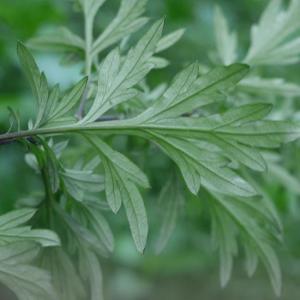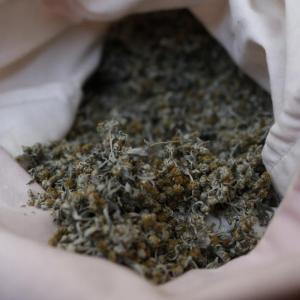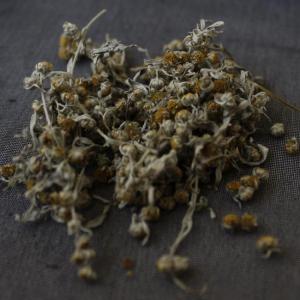
MUGWORT PLANT (ARTEMISIA ARGYI) - PLANTS

BASE / GENERAL DATA
Information submited: May 27, 2016 Modified: May 15, 2018 By: OperaDreamhouse
Artemisia Argyi, the Chinese Mugwort, is a herbaceous perennial plant with a creeping rhizome. It is native to China, Korea, Mongolia, Japan, and the Russian Far East.
Mugwort is a common name for several species of aromatic plants in the genus Artemisia. In Europe, Mugwort most often refers to the species Artemisia Vulgaris, or common Mugwort. While other species are sometimes referred to by more specific common names, they may be called simply "Mugwort" in many contexts.
For example, one species, Artemisia Argyi, is often called "Mugwort" in the context of Traditional Chinese Medicine but may be also referred to by the more specific name "Chinese Mugwort". Artemisia princeps is the Japanese Mugwort, also known as Yomogi.
Mugwort is a common name for several species of aromatic plants in the genus Artemisia. In Europe, Mugwort most often refers to the species Artemisia Vulgaris, or common Mugwort. While other species are sometimes referred to by more specific common names, they may be called simply "Mugwort" in many contexts.
For example, one species, Artemisia Argyi, is often called "Mugwort" in the context of Traditional Chinese Medicine but may be also referred to by the more specific name "Chinese Mugwort". Artemisia princeps is the Japanese Mugwort, also known as Yomogi.
Artemisia Argyi is an upright, greyish, herbaceous perennial about one metre tall, with short branches and a creeping rhizome. The stalked leaves are ovate, deeply divided and covered in small, oil-producing glands, pubescent above and densely white tomentose below. The individual flowers are pale yellow, tubular, and clustered in spherical turned-down heads.
This Chinese Mugwort is growing on dry mountain slopes, steep river banks, the edges of oak woods, coastal scrub, wasteland and along road and railway verges. The plants do better and are more aromatic when they grow on poor dry soil.
Mugwort also used as an herb to flavor food. The leaves and buds, best picked shortly before Mugwort flowers in July to September, were used as a bitter flavoring agent to season fat, meat and fish. Mugwort has also been used to flavor beer before the introduction of, or instead of hops.
Since ancient times, Chinese Mugwort has been used in several applications. The plant is edible and can be used to make pastries, breads, dumplings, and cakes, and can be mixed with rice or processed into tea or wine.
Since ancient times, Chinese Mugwort has been used in several applications. The plant is edible and can be used to make pastries, breads, dumplings, and cakes, and can be mixed with rice or processed into tea or wine.

SPIRITUAL PRACTISES DATA

MEDICINE / HEALTH DATA
Information submited: May 27, 2016 Modified: May 15, 2018 By: OperaDreamhouse
Chemical structure:
Extensive chemical studies of Artemisia species, including Chinese Mugwort, document many compounds, including monoterpenes, sesquiterpenes, triterpenes and flavones.
Contraindications:
Mugwort oil contains thujone, which is toxic in large amounts or under prolonged intake. Thujone is also present in Thuja plicata (Western Red Cedar), from which the name is derived. All parts of the plant contain essential oils with all-purpose insecticidal properties (especially in the killing of insect larvae). This is best used in a weak infusion, but use on garden plants is not recommended as it also reduces plant growth. But the plant itself using small quantities is non-toxic.
A volatile oil can be extracted from the leaves and used in the treatment of asthma and bronchitis for which purpose it is sprayed onto the back of the throat and brings rapid relief.
Extensive chemical studies of Artemisia species, including Chinese Mugwort, document many compounds, including monoterpenes, sesquiterpenes, triterpenes and flavones.
Contraindications:
Mugwort oil contains thujone, which is toxic in large amounts or under prolonged intake. Thujone is also present in Thuja plicata (Western Red Cedar), from which the name is derived. All parts of the plant contain essential oils with all-purpose insecticidal properties (especially in the killing of insect larvae). This is best used in a weak infusion, but use on garden plants is not recommended as it also reduces plant growth. But the plant itself using small quantities is non-toxic.
A volatile oil can be extracted from the leaves and used in the treatment of asthma and bronchitis for which purpose it is sprayed onto the back of the throat and brings rapid relief.
Mugworts are used medicinally, especially in Chinese, Japanese, Tibetan and Korean traditional medicine. Some Mugworts have also found a use in modern medicine for their anti-herpetic effect.
Wormwood leaves are gathered on a warm dry day in spring and summer when the plant is in flower and dried in the shade. In Traditional Chinese Medicine, they are considered to have bitter, pungent and warm properties and to be associated with the liver, spleen and kidney meridians.
The herb is considered to increase the blood supply to the pelvic region and stimulate menstruation, help treat infertility, dysmenorrhea, asthma and coughs. In Traditional Chinese Medicine, the leaf has been used to treat asthma, malaria, hepatitis, and inflammation, as well as fungal, bacterial, andviral infections.
Another use is in moxibustion, a form of healing in which the herb is burned in cones or sticks or on the tip of an acupuncture needle.
Boiling water can be poured onto the ground up leaves and used in a decoction, alone or with other substances, and the fresh leaf can be crushed and blended and a juice extracted.
The leaves have an antibacterial action and have been shown to be effective against staphylococcus aureus, bacillus dysenteriae, bacillus subtilis, bacillus typhi, escherichia coli and pseudomonas.
Nearly fifty volatile constituents have been identified from Artemisia Argyi flowers and it is suggested that therapeutic use of the flowers may be just as effective as using the leaves.
Wormwood leaves are gathered on a warm dry day in spring and summer when the plant is in flower and dried in the shade. In Traditional Chinese Medicine, they are considered to have bitter, pungent and warm properties and to be associated with the liver, spleen and kidney meridians.
The herb is considered to increase the blood supply to the pelvic region and stimulate menstruation, help treat infertility, dysmenorrhea, asthma and coughs. In Traditional Chinese Medicine, the leaf has been used to treat asthma, malaria, hepatitis, and inflammation, as well as fungal, bacterial, andviral infections.
Another use is in moxibustion, a form of healing in which the herb is burned in cones or sticks or on the tip of an acupuncture needle.
Boiling water can be poured onto the ground up leaves and used in a decoction, alone or with other substances, and the fresh leaf can be crushed and blended and a juice extracted.
The leaves have an antibacterial action and have been shown to be effective against staphylococcus aureus, bacillus dysenteriae, bacillus subtilis, bacillus typhi, escherichia coli and pseudomonas.
Nearly fifty volatile constituents have been identified from Artemisia Argyi flowers and it is suggested that therapeutic use of the flowers may be just as effective as using the leaves.

BEAUTY / COSMETICS DATA

FOOD / COOKING DATA
COMMENTS
No comments.
Newest mixtures containing Mugwort Plant (Artemisia Argyi):

Moxibustion treatment with Moxa stick
May 30, 2016




